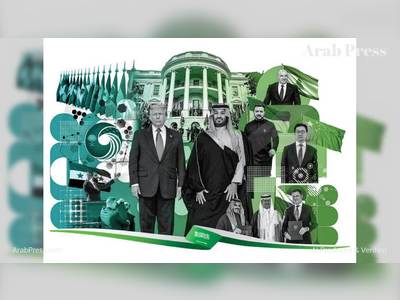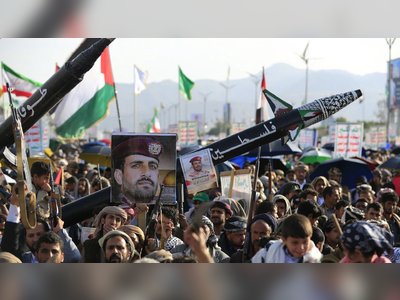
Iranian tenants increasingly pushed to the brink as prices soar
"We were lucky," says 58-year-old Leila, whose family of four lives in an average-sized unit in an apartment complex in western Tehran. She explained that her landlord recently imposed a 15 percent rent increase and no increase in the annual down payment.
"I know next year we'll have the same concerns all over again, but I couldn't even imagine having to move right now," she told Al Jazeera, requesting her last name to be withheld.
As housing becomes increasingly unaffordable in an economy ravaged by COVID-19 and United States sanctions, some have had it much harder. Reports say people have resorted to sleeping on rented rooftops, spending the night in tents, moving back with their parents, or leaving metropolises for suburbs or small towns.
According to the latest figures by the Ministry of Roads and Urban Development, which date back to three years ago, 19 million Iranians lived in poor housing conditions in a country of more than 80 million.
Experts believe the numbers have only grown exponentially since, with a member of the Iranian Association of Spatial Planning, Mohammad Reza Mahboubfar, estimating in May that about 38 million, or 45 percent of Iranians, currently live in poor housing conditions.
There have been reports of construction workers and cash-strapped students renting rooftops at Tehran's District 22 for a nightly fee. Reports of people spending the nights in tents or their vehicles have only become more prevalent in the past two years as the housing affordability crisis has deepened.
Earlier this year, state-run news agency IRNA reported that married couples are increasingly renting out containers to house their furniture and appliances as they are forced to move back with their parents in order to cut down costs.
The latest report by the Ministry of Cooperatives, Labor and Social Welfare indicates that about 30 percent of people in Iran live in rented homes. That share grows to 51 percent in the province of Tehran and 44 percent in the city.
Rents increased by 27.4 percent and 30.6 percent in Tehran and across all urban areas respectively during the fifth month of the current Iranian year that ended on August 21, according to the latest monthly housing report released by the Central Bank of Iran.
But the reality on the ground feels different from many people, especially those living in Tehran, where prices continue to surge unabated.
"Last month, my landlord asked for twice the rent of last year and not wanting to take the matter to the courts, I had no choice but to move out in the middle of a pandemic," says 29-year-old Milad.
"I ended up having to become roommates with one of my friends who was also nearing the end of his tenancy contract and we had to move further south in the city where prices were relatively more affordable," he told Al Jazeera.
In late July, President Hassan Rouhani announced that until three months after the Ministry of Health officially declares that coronavirus is no longer a public health hazard, landlords and realtors who broker tenancy contracts are obligated to cap rent rises at 25 percent in Tehran, 20 percent in other metropolises, and 15 percent in small cities. Rental contracts would also be automatically renewed, the president decreed.
Evictions have also been put on hold and realtors have been told to comply or face closures.
"If landlords do not comply with this law, tenants should stay in the house because courts will not rule to evict," announced the head of the Tehran Association of Realtors, Hesam Oqbaei.
Government finances limited
The nature of the financial support offered by the administration is also telling of how the housing situation took a significant turn for worse, even compared with when the president's second tenure began in 2017.
Rouhani announced in mid-summer the government will soon hand out loans aimed at covering the down payment of renting a home.
The loans, which amount to 500 million rials ($1,890) in Tehran, 300 million rials ($1,130) in big cities, and 150 million rials ($570) in small cities, will be granted by banks to eligible tenants, but will be disbursed directly to landlords. The tenants will pay 13 percent interest on the loans in the form of monthly instalments, and the original amount will be returned to the bank by the end of the one-year contract.
Loan allocations were delayed because the online infrastructure to connect applicants with banks was not ready. According to the roads ministry, more than 2.2 million people have sent applications as of late September, while only a few thousand loans have been granted.
While some have praised the initiative, many deem it insufficient or see it as a move that will only serve to drag tenants into more debt.
But the government, which was already facing serious budget constraints due to the impact of unilateral US sanctions on its oil sales and other sources of income and is now battling the worst COVID-19 epidemic in the Middle East, is left with few options.
"Due to limited resources, we have no choice but to prioritise payments on the housing down payment loans, with people who are in dire need being deemed eligible to use them," said Parvaneh Aslani, the head of the Housing Economy Office at the Ministry of Roads and Urban Development in a statement in late July.
'No longer even a dream'
Meanwhile, some Iranians are simply frustrated with how far the buying power of the middle and lower classes has fallen.
"Have you noticed? In a few short years, we've come from homeownership loans to down payment loans," one user tweeted. "Not only homeownership is no longer even a dream for many people, paying rent is becoming a dream."
As recently as two years ago, the main focus of the Rouhani administration for the housing sector was to allocate cheap loans to help average Iranians, especially first-time homebuyers, to become homeowners.
But rampant inflation, coupled with constant fluctuations in markets, have made homeownership a distant dream for most Iranians.
A July report by the Statistical Center of Iran shows that housing and related expenses on average take up a significant 48 percent of Iranian household expenses. This is while the share stood at 33 percent when Rouhani took office for the second time in 2017.
For the past year, several popular websites that allow clients to post ads for selling or renting homes have been blamed for the rapid rise in housing expenses.
This led the judiciary to issue an order, obligating the websites to remove price tags. Unsurprisingly, the move only led to a more costly and time-consuming process for consumers while prices continued to surge.
But there is another important measure that has been under discussion and review for years: more effectively taxing the housing sector.
In mid-July, the parliament ratified the general outlines of a bill aimed at implementing an empty homes tax for homeowners who do not offer their properties to the market. The double-urgency bill will need to be greenlit by the constitutional overwatch body known as the Guardian Council in addition to the parliament to become law.
According to officials, a housing capital gains tax is also expected to clear parliament this year with the aim of combating speculative activities and bringing prices down.
It is estimated there are about 2.6 million empty houses in Iran, with about one-fifth located in Tehran.
Many of the properties were bought en masse by state or quasi-state entities during the previous decade in hopes of profiting from a massive housing boom that ended in a crash.
For instance, roads ministry deputy Mahmoud Ahmadzadeh announced in late July that an unnamed quasi-state bank owns more than 1,000 empty houses in Tehran alone.











